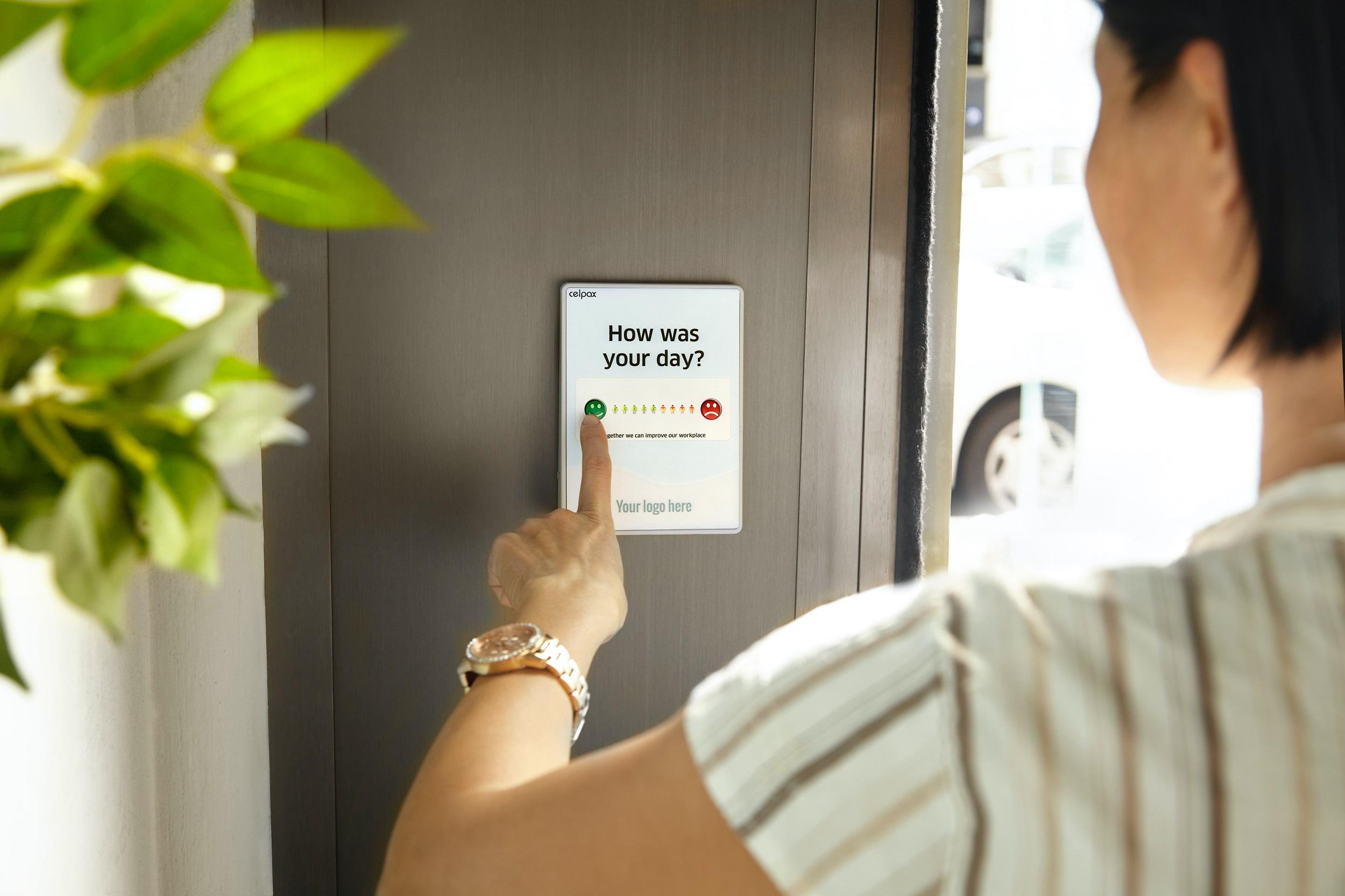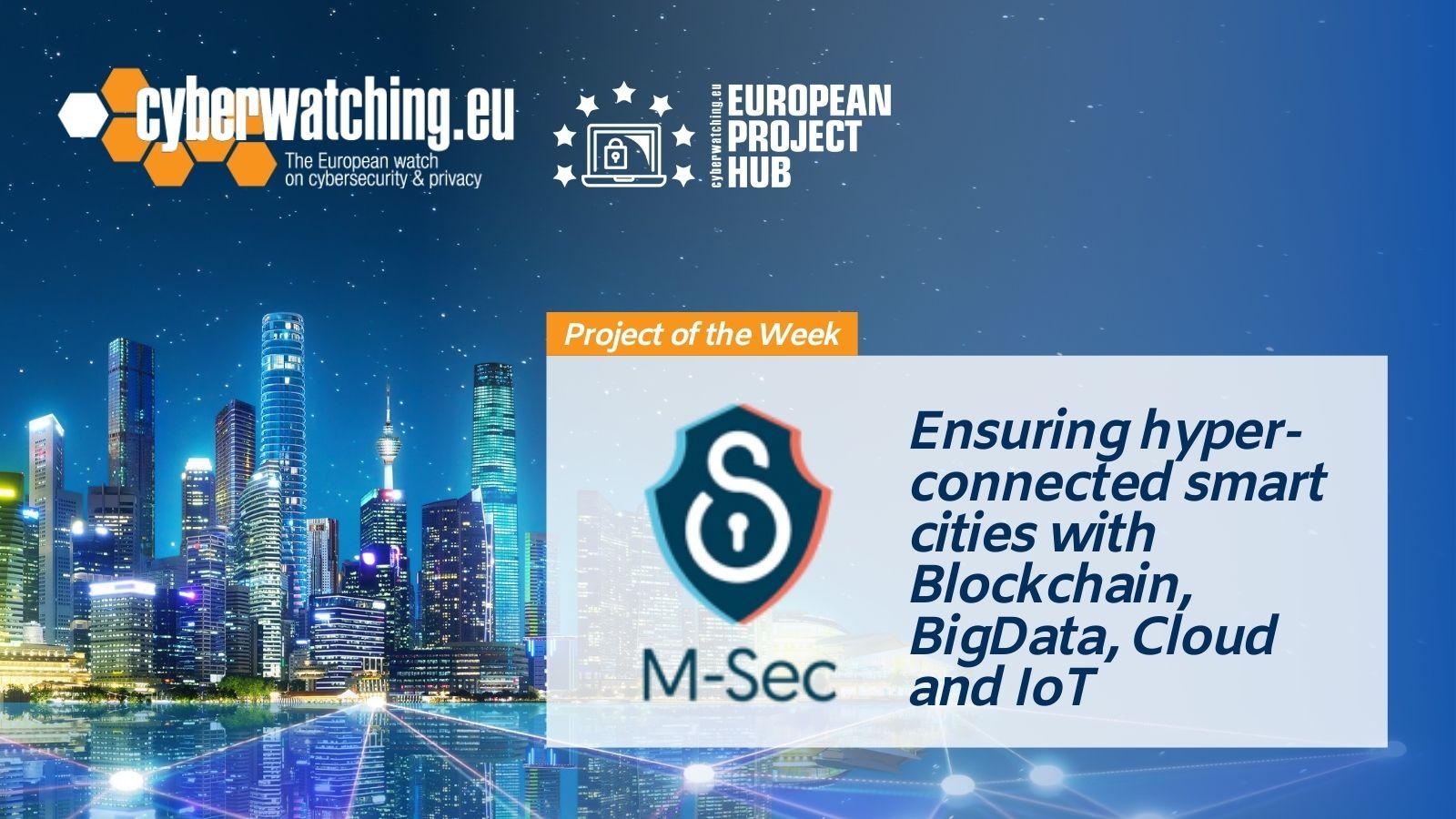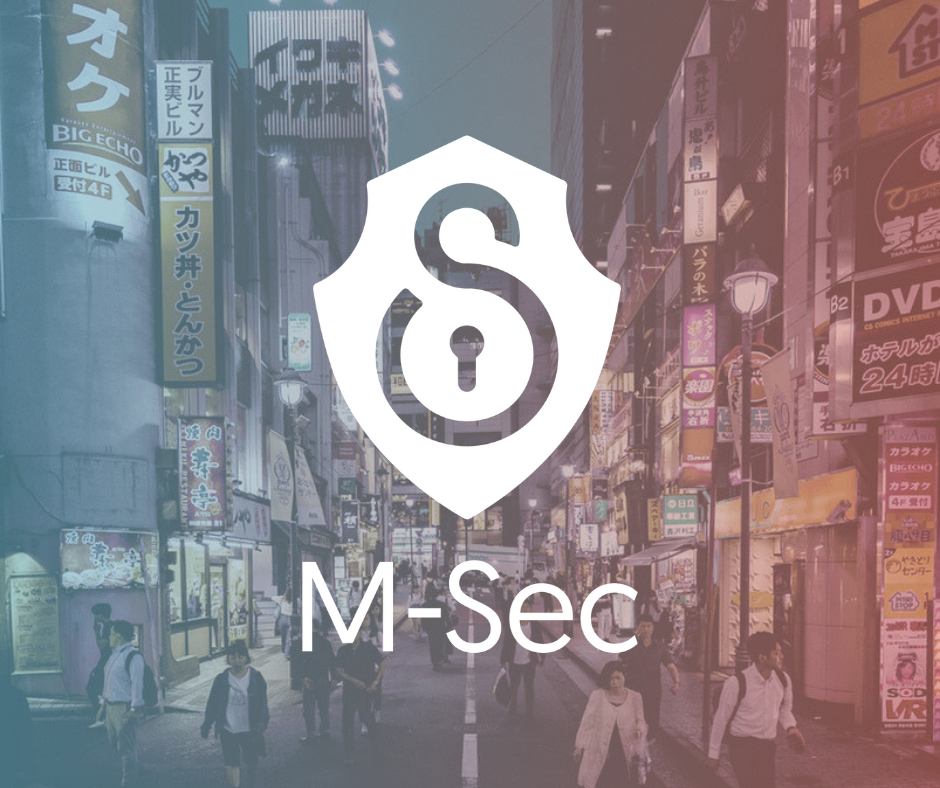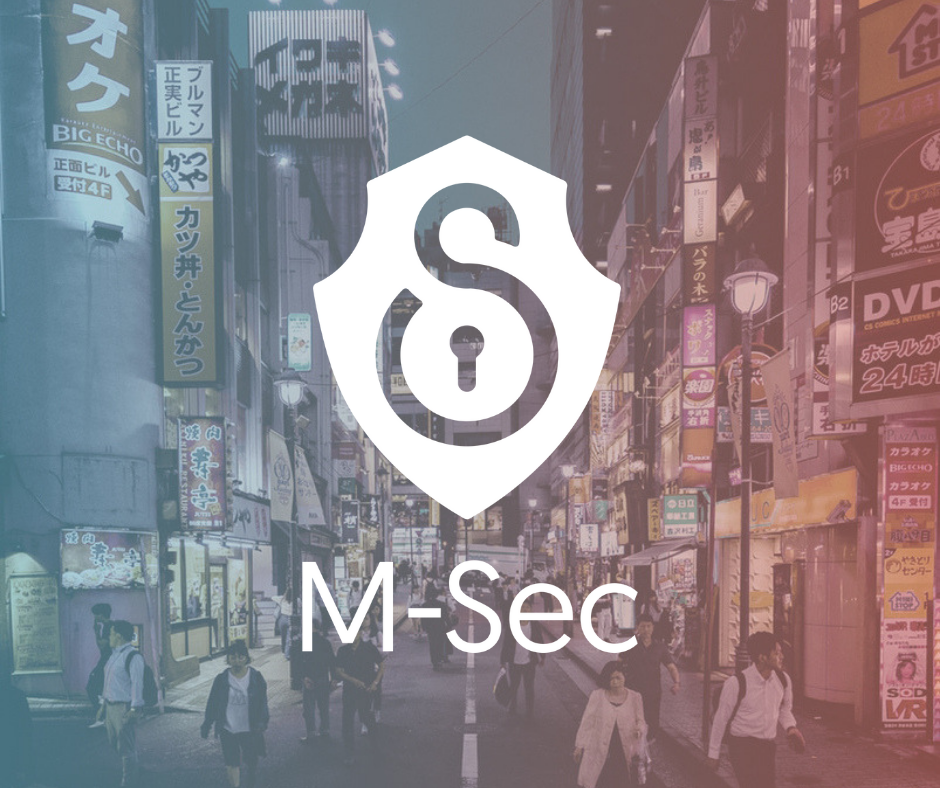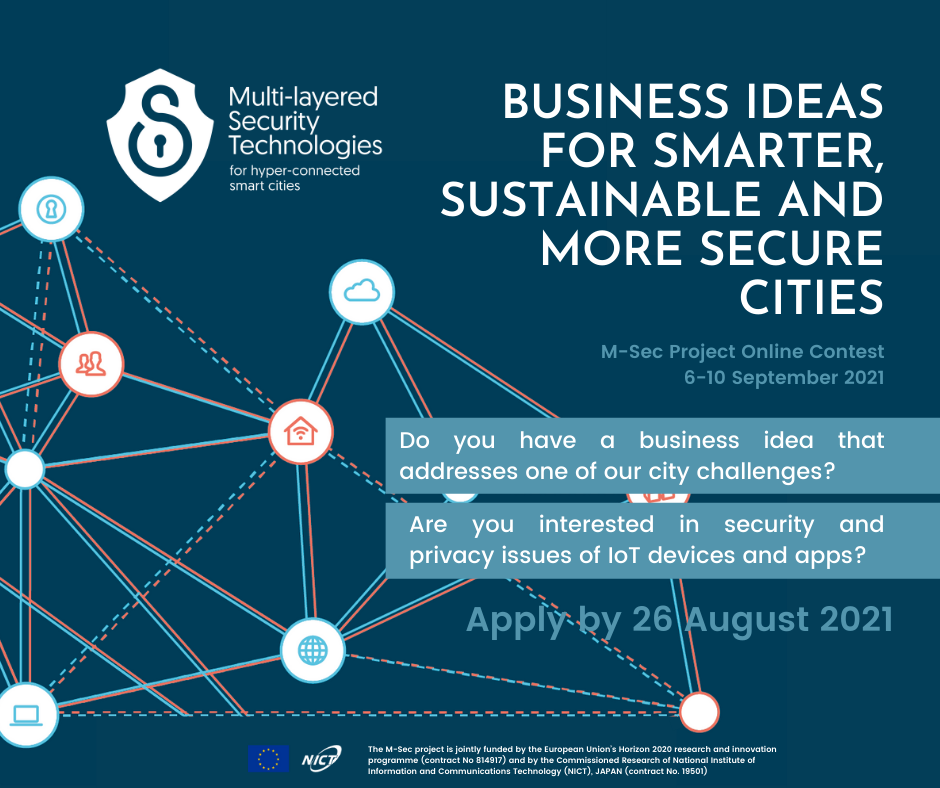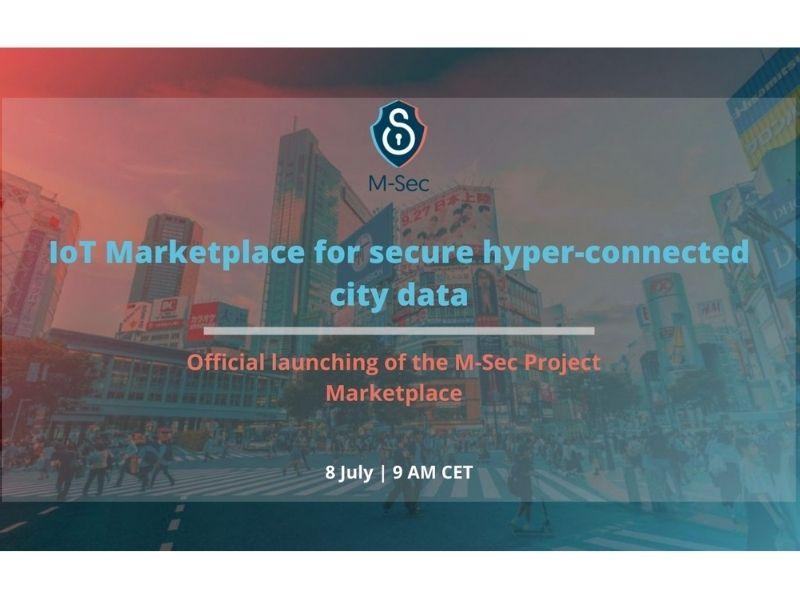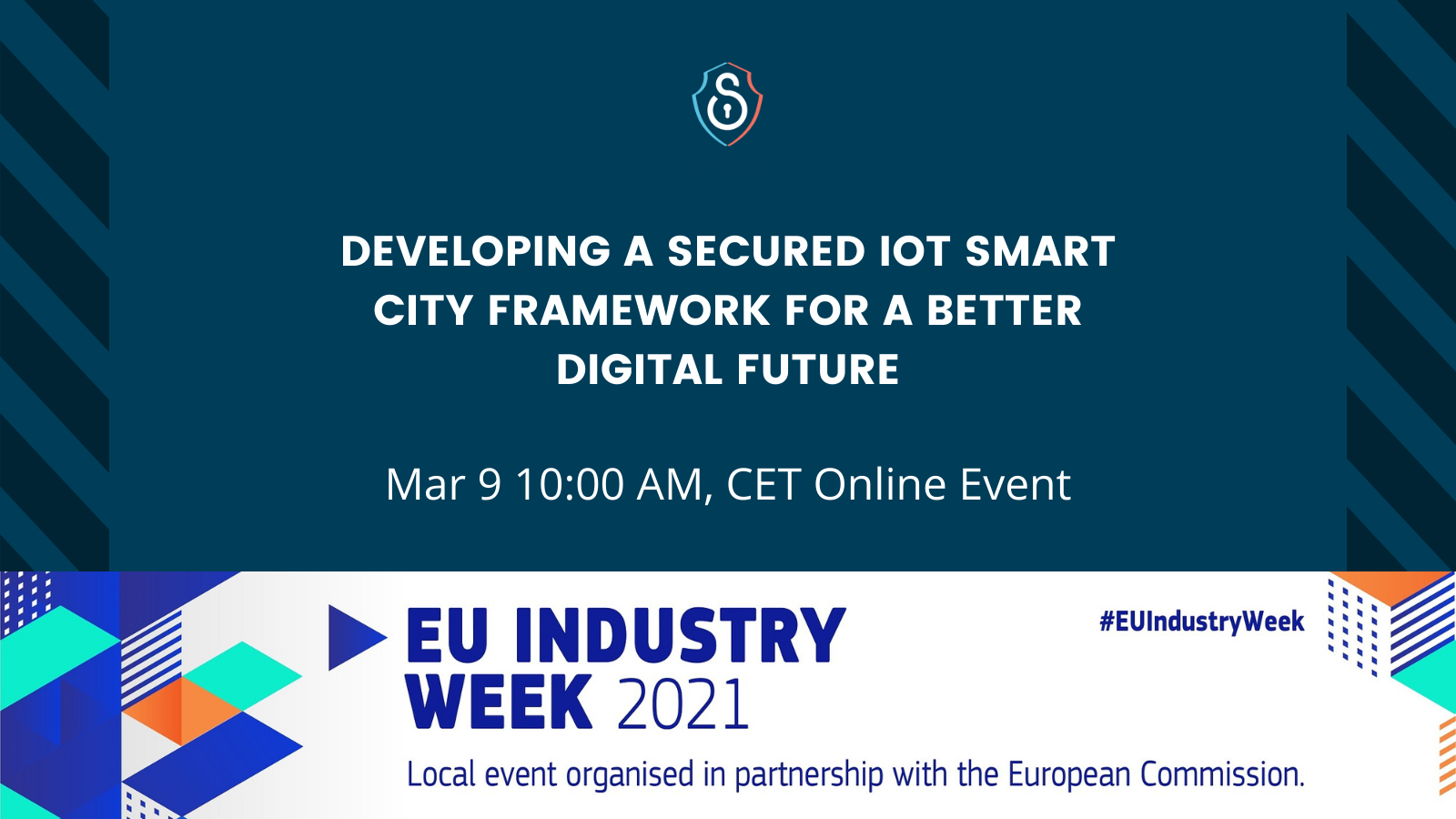
Error message
- Warning: Use of undefined constant REQUEST_URI - assumed 'REQUEST_URI' (this will throw an Error in a future version of PHP) in eval() (line 2 of /var/www/html/web/modules/php/php.module(80) : eval()'d code).
- Warning: Use of undefined constant REQUEST_URI - assumed 'REQUEST_URI' (this will throw an Error in a future version of PHP) in eval() (line 2 of /var/www/html/web/modules/php/php.module(80) : eval()'d code).
M-Sec
Multi-layered Security technologies to ensure hyper connected smart cities with Blockchain, BigData, Cloud and IoT
Nadine Teles
01 July 2018
30 September 2021
EC funded project
M-Sec is an EU&JP R&D Project co financed by the European Commission under the H2020 programme and the National Institute of Information and communications - National Research and Development Agency specialized in the field of information and communications technology that promotes innovation and research in Japan.
The M-Sec consortium is a strong partnership of leading European and Japanese universities and research centers as well as companies in the area of Big Data, IoT, Cloud Computing, Blockchain and all of them have an extensive experience in smart city related projects.
The overall M-Sec consortium is made of 12 partners, 6 from 4 different European countries (France, Spain, Greece, Ireland) and 6 from Japan. The consortium is represented by 3 large industrial groups (Worldline Iberia, NTT East and NTTDMC), 3 research institutes (ICCS, CEA, NII), 3 universities (KΕΙΟ, YNU and WU), 2 SMEs (TST and F6S), in addition to 2 committed cities: Santander (full partner) and Fujisawa, that is fully committed to give its support to the project facilitating the implementation and replication of different pilots.
What is M-Sec trying to solve?
In modern smart city applications there is an emerging need of end-to-end security since many data sources may contain sensitive information that raises issue on privacy and data protection. The security and privacy issues should be addressed in all layers to ensure “end-to-end security and privacy”. For instance, many smart city applications are utilizing data streams such as images from cameras or mobile applications, and these streams should be protected from attackers in the all layers by, for example, hijack protection mechanism in the sensors devices, secure IoT gateway connecting the devices and cloud, data encryption and access control in the cloud, and secure applications utilizing the data stream.
It is in this context that the M-Sec solution is being developed, with the main goal of developing a technology capable of ensuring safety and privacy of the data exchanged in highly connected smart cities, through the development of several protection layers: at the device level and applications used, during the exchange of information that is held between the several devices and applications, in storing that information in the Cloud, and at the development and creation of other smart devices and applications, that follow the same data safety and privacy criteria.
M-Sec as a solution to the great challenge in privacy and data security
One of the main results of the project is based on providing a set of components that provide security and integrity of data traffic, end to end, from the device to the Cloud and to the application in a secure and transparent way, with a modular approach for the IoT and Smart City domain.
At the device level, M-Sec not only provides a secure element embedded in the hardware that allows storing all confidential information using cryptographic keys, performing sensitive operations in a more secure way and verifying the integrity of the system, but also provides a tool vulnerability detection, which allows analyzing and identifying abnormal patterns, automatically reporting to the security center and blocking the entry of malicious traffic into the network.
Data collection and transfer is carried out in an interoperable and scalable way thanks to the use of protocols through which data can be received from different sensors and from different manufacturers. Including an access control mechanism that allows only authorized persons to read raw data or interact with IoT devices.
Regarding the data storage part, the consortium uses blockchain technology. Blockchain is a chain of blocks (decentralized database) where all data is linked, encrypted and distributed, allowing transactions to be carried out safely without the need for intermediaries. All the information registered in the blockchain cannot be erased or modified. Thanks to the immutability feature, it is possible to transform the audit process into a fast and efficient procedure. Suppose we want to add a layer of security to the traditional encrypted data storage system that takes place offchain (outside the blockchain). In this scenario, M-Sec allows generating a hash that is simply an alphanumeric code generated from a text string and automatically saving it as an on-chain transaction (in the blockhain itself), allowing to verify at any time if the data has been modified since any attempt to manipulate the data would change the resulting hash.
In addition to the blockchain, artificial intelligence is also present in M-Sec. One of the current problems in the context of smart cities comes from the amount of personal data captured in images or videos of cameras deployed in the city. As a result, most data is only saved or shared internally, or even discarded to reduce risk of leakage. M-Sec provides a tool that allows to automatically eliminate all personal information contained in videos or images, using an object detection network and a network that eliminates naturally detected objects as if they did not originally exist.
Finally, M-Sec provides tools for the design and development of applications that support developers and manufacturers of new devices and applications to fulfil citizens data safety and privacy measures of.
To sum up, M-Sec is not only a solution. Its several suggestions that, together, allow the safety and privacy of data exchange in hyperconnected smart cities.
How will the M-Sec infrastructure be tested?
The M-Sec project will validate its approach through five different smart city use cases by having two important European and Japanese cities on board - Santander and Fujisawa, each recognized having already developed a long-term “smart city” approach, which makes them ideal for implementing the M-Sec pilots.
The pilots implemented in Santander aim at improving the well-being of citizens (Use Case 1), namely of the elderly population (Pilot 2). In the first Use Case, a series of sensors was developed in order to measure several variables that influence the population's well-being, such as noise level or the number of persons in a specific location. Citizens will find QR codes in a city park in order to join this experience, and an application will allow them to access and classify the amount of information that is submitted. The information collected by M-Sec will complement and enrich the existing one, thus supporting Santander's City Council to extract several valuable conclusions to improve the well-being of its citizens. In Use Case 2 the goal is to improve the quality of life of the elderly population living in big cities, by monitoring their well-being and fighting social isolation. Citizens will be monitored through several sensors installed in their houses and connected to domestic devices, and by using activity bracelets. The innovation brought by the M-Sec project is the ability to ensure the safety and privacy of end-to-end data, since the elderly to the formal or informal caretaker.
Use Case 3 that is being implemented in Fujisawa has a greater environmental focus. On the one hand, it provides citizens with real-time environmental data (such as air quality, temperature, pressure, etc.) and, on the other hand, it tries to implement a urban garbage collection counting, capable of counting the amount of garbage that is generated in each house, thus promoting awareness among citizens on the quantity of garbage that is generated on a daily basis.
Finaly, in the case of cross-border Use Cases 4 and 5, while one intends to create a marketplace between the EU and Japan for exchanging data, based on M-Sec's multi-layered approach, the other one explores the possibility of citizens in a given city being able to share "affective" information about it, through an application called "SmartCity Report", that allow sharing of photos on specific topics (tourist attractions, gastronomy, events, etc.).
In some use cases, a reward system is being implemented such as gamification, so as to stimulate a greater participation from citizens. Also, the project will try to replicate the M-Sec solution in other cities, and is thus currently looking for new partners to test, pilot and validate this solution.
Category:
- Secure systems and technology
Vertical Category:
- Smart cities
Video
Resources for EU Research
Resources for SMEs
News & Events
Reports
Cyberwatching.eu has received funding from the European Union’s Horizon 2020 research and innovation programme under grant agreement No 740129. The content of this website does not represent the opinion of the European Commission, and the European Commission is not responsible for any use that might be made of such content. Privacy Policy | Disclaimer / Terms and Conditions of Use



